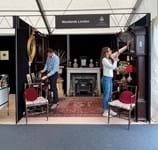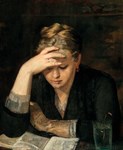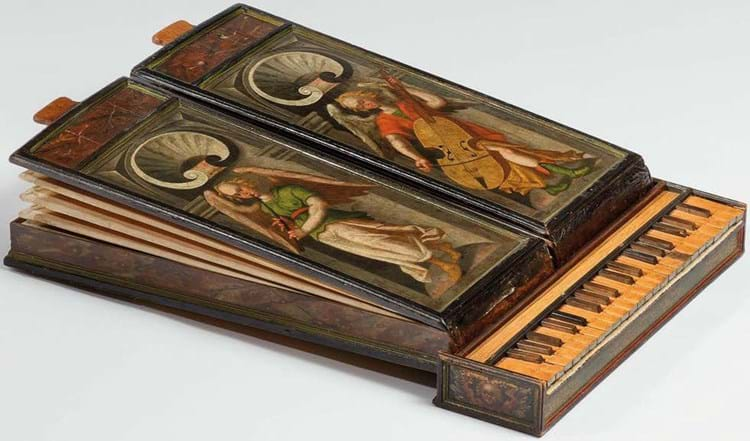
With only half the 266 lots finding buyers on auction day, the sale of the De Leye collection at Lempertz (25/20% buyer’s premium) in Cologne on July 15 was far from a white-glove event. Nevertheless, the saleroom achieved numerous notable results for the objects that had been amassed by the renowned Belgian dealer Bernard De Leye over the last four decades.
A familiar face at fairs from Maastricht to Shanghai, De Leye was for several years president of the Belgian Chamber of Experts in Works of Art and of the BRAFA art fair.
His speciality is gold and silver works of art, primarily from France and the Netherlands, generally with an aristocratic or royal provenance, but his taste is eclectic and the auction also included antiques from all eras and some with low four-figure guides.
Magnificent ewer
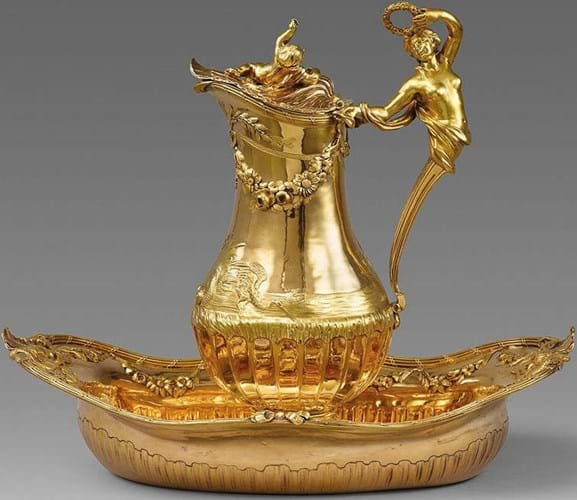
A late 18th century silver gilt ewer with matching basin was the most expensive item from the De Leye collection, bringing €900,000 (£775,860) at Lempertz.
Many of the top lots went to De Leye’s compatriots. Belgian collectors picked up most of the six-figure pieces, including the magnificent silver gilt ewer with matching basin created in 1770 by the Parisian silversmith Jean- Baptiste-François Chéret for the Marquis and Marquise de Montmelas (previewed in ATG No 2499), which was knocked down for €900,000 (£775,860), just shy of the €1m Lempertz was hoping for.
An added attraction were four drawings by Chéret, which documented the route of the craftsman to his final design.
It was a similar story when another Belgian collector purchased the 17th century amber and ivory altar also previewed in ATG No 2499. It was knocked down for €260,000 (£224,140), slightly below the guide.
Another Belgian buyer paid a mid-estimate €210,000 (£181,035) for a parcel gilt silver drinking vessel in the form of a stag created by the Stuttgart silversmith Johann Jakob Wagner, c.1680.
Lempertz had high hopes for a mid-16th century, intricately carved elephant tusk with gold mounts and set with precious and semi-precious stones. The so-called Eingehurn belonged to Andreas von Thüngen, one-time canon of Wurzburg cathedral.
The final bid of €500,000 was, however, not enough to meet the reserve; it remained unsold, as did a highly ornate silver and lapis lazuli hourglass from 1589 which Pope Sixtus V presented to Ferdinand I Medici on occasion of his marriage to Christine of Lorraine. Lempertz had expected to achieve €400,000.
Eye for the unusual
The bidders had a keen eye for the unusual and several positive surprises emerged, such as the €110,000 (£94,830) for a mid-17th century, silver mounted rock crystal crucifix, probably of Austrian origin, which went over the upper estimate and is now part of a Swiss collection.
Highly sought after was a small portable organ, designed to be placed on a table. It was attributed to an unknown craftsman in Nuremburg, working in the last quarter of the 16th century. By tradition it was presented by Countess Marguerite de Lalaing of Berlaymont to the convent in Brussels bearing her name that she founded in 1625. Bidding began at €60,000 and the painted organ found a new owner for €95,000 (£81,895).
A Norwegian collector went way over the guide to secure an early 17th century, south German powder horn. The gilt bronze-mounted stag horn was carved with a nude figure of Lucretia plunging a dagger into her chest. The estimate of €2000-3000 was left behind quickly and the bids continued to €30,000 (£25,860).
From about the same period, but of Dutch origin, was an oval silver relief with the Temptation of Christ, attributed to Arent van Bolten, a silversmith from Zwolle. It more than trebled its estimate at €34,000 (£29,310).
Ivory was the favoured material used by 17th century Flemish sculptor François van Bossuit, to whom a relief with The Flaying of Marsyas was attributed. A collector put up a mid-estimate €170,000 (£146,550) to see off the competition.
A Belgian buyer was able to pick up a 2ft 6in (75cm) high, 17th century ivory Corpus Christi for a below-estimate €165,000 (£142,240). It is considered to be the work of Mattheus van Beveren of Antwerp, about whom little is known, other than that he created large format church sculptures as well as small figures and medals.
Gold beaker
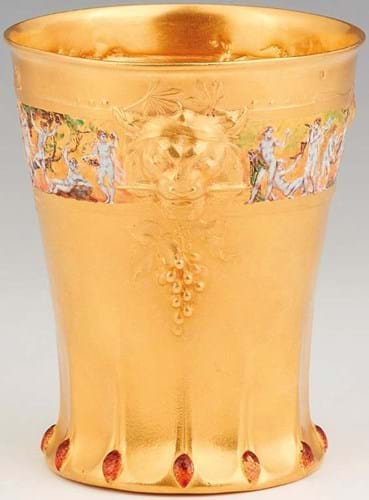
This gold and enamel beaker was created in Paris for the World’s Columbian Exposition in Chicago, held in 1893. It was purchased at Lempertz by a Parisian dealer for the estimated €120,000 (£103,450).
Among the more modern pieces in the collection was a 22ct gold beaker, designed and executed by the Parisian goldsmith Jules- Paul Brateau and the enamellist Paul Grandhomme for the World’s Columbian Exposition in Chicago, held in 1893 to celebrate the 400th anniversary of the discovery of America by Christopher Columbus.
The beaker was decorated with an enamel frieze of a wine harvest and three large masks in relief: one a faun’s head, one a woman’s head with flowing hair and one of a panther’s head.
After a brief tussle it sold to a Parisian dealer for the estimated €120,000 (£103,450).
£1 = €1.16


